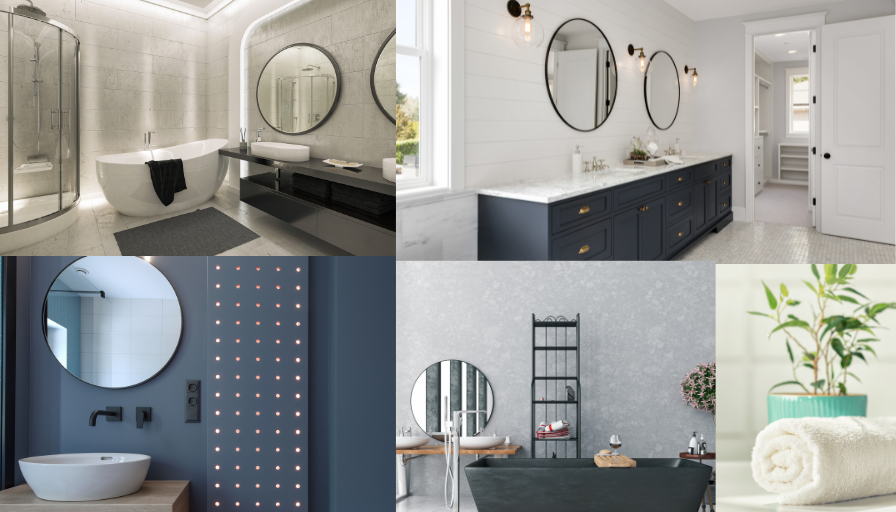Illuminating Your Home: The Art and Science of Lighting
- Leo Kruger
- Jul 9, 2024
- 3 min read

Lighting is an essential element in home design, often underestimated in its ability to transform a space. Beyond mere functionality, the right lighting can enhance the ambiance, create mood, and highlight architectural features. In this blog post, we will explore the art and science of using lighting to elevate your home spaces.
Understanding the Basics of Lighting
Lighting in home design can be categorized into three main types: ambient, task, and accent lighting. Each serves a distinct purpose and contributes to the overall aesthetic and functionality of a room.
Ambient Lighting
Ambient lighting is the general illumination that fills a room, providing an overall level of brightness. This type of lighting ensures safe and easy navigation throughout the space. Common sources of ambient lighting include ceiling-mounted fixtures, chandeliers, and recessed lights. The goal is to create a comfortable level of brightness without harsh shadows.
Task Lighting
Task lighting is focused lighting that aids in specific activities such as reading, cooking, or working. This type of lighting is essential in areas like kitchens, home offices, and reading nooks. Examples of task lighting include under-cabinet lights, desk lamps, and pendant lights. Proper task lighting reduces eye strain and enhances productivity.
Accent Lighting
Accent lighting is used to highlight specific features within a space, such as artwork, architectural details, or decorative objects. It adds drama and visual interest, drawing attention to focal points. Track lighting, wall sconces, and spotlights are common examples of accent lighting. When used effectively, accent lighting can transform an ordinary room into a captivating visual experience.
Layering Light: The Key to Dynamic Spaces
The most effective lighting design involves layering different types of lighting to create depth and dimension. By combining ambient, task, and accent lighting, you can tailor the illumination to suit various needs and moods.
Living Room
In the living room, a combination of ambient and accent lighting works best. A central chandelier or ceiling fixture provides overall illumination, while table lamps and floor lamps add warmth and coziness. To highlight artwork or architectural features, consider using wall sconces or picture lights.
Kitchen
The kitchen requires a mix of ambient and task lighting. Recessed ceiling lights or a central pendant light can provide general illumination, while under-cabinet lights ensure that countertops are well-lit for food preparation. Pendant lights above an island or dining area add both functionality and style.
Bedroom
In the bedroom, the goal is to create a relaxing and serene atmosphere. Soft ambient lighting from a ceiling fixture or wall sconces sets the tone, while bedside lamps provide focused light for reading. Dimmer switches are a great addition, allowing you to adjust the light levels to suit your mood.
Bathroom
Effective bathroom lighting combines ambient and task lighting. Overhead lights provide general illumination, while vanity lights around the mirror offer bright, even light for grooming tasks. Consider adding accent lighting to highlight a beautiful tile design or a luxurious bathtub.
Choosing the Right Light Bulbs
The type of light bulb you choose can significantly impact the quality of light in your home. Here are some key factors to consider:
- Color Temperature: Measured in Kelvins (K), color temperature ranges from warm (yellowish) to cool (bluish) light. Warm light (2700K-3000K) is ideal for living rooms and bedrooms, creating a cozy and inviting atmosphere. Cool light (3500K-5000K) is better suited for task-oriented spaces like kitchens and bathrooms, as it enhances visibility and focus.
- Lumens: Lumens measure the brightness of a light bulb. The higher the lumens, the brighter the light. Consider the size of the room and the desired level of illumination when selecting bulbs.
-*Energy Efficiency:LED bulbs are a popular choice due to their energy efficiency and long lifespan. They are available in a variety of color temperatures and styles, making them versatile for any space.
Lighting is a powerful tool in home design, influencing both the functionality and aesthetics of a space. By understanding the different types of lighting and how to layer them effectively, you can create a well-lit, beautiful, and comfortable home. Remember, the right lighting can elevate your interiors from ordinary to extraordinary, making your home a true reflection of your style and personality.
TF FURNISHERS - Leo Kruger




Comments